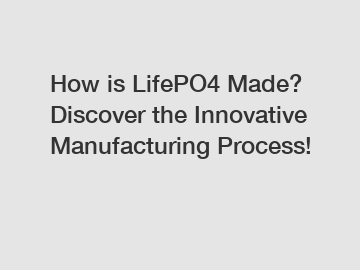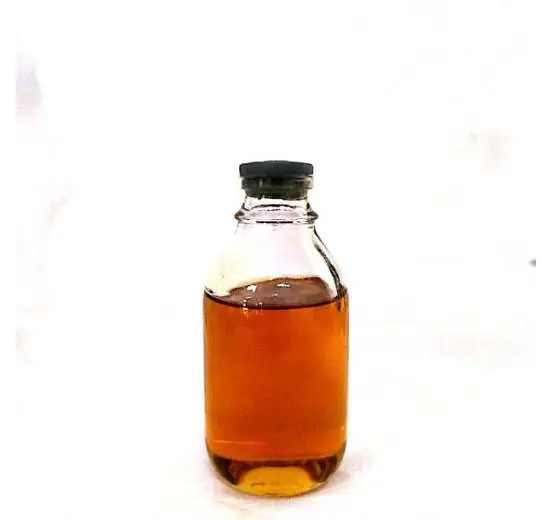How is LifePO4 Made? Discover the Innovative Manufacturing Process!
How is LifePO4 Made? Discover the Innovative Manufacturing Process!
In today's world, where sustainability and environmental concerns are at the forefront of many industries, the need for efficient and eco-friendly energy storage solutions is higher than ever. One of the most promising technologies in this arena is the lithium iron phosphate battery, commonly known as LifePO4. This versatile battery offers numerous advantages over traditional lithium-ion batteries, including longer lifespan, improved safety, and greater thermal stability. But have you ever wondered how LifePO4 batteries are made? In this blog post, we will take you on a journey through the innovative manufacturing process behind this revolutionary energy storage solution.
Before we dive into the manufacturing process, let's briefly discuss the science behind LifePO4 batteries. These batteries are composed of lithium iron phosphate as the cathode material, along with a graphite anode and an electrolyte solution. Unlike conventional lithium-ion batteries, which use cobalt as the cathode material, LifePO4 batteries are more sustainable and environmentally friendly due to their iron-based chemistry.

The manufacturing process of LifePO4 batteries begins with the synthesis of lithium iron phosphate. This compound is produced through a series of chemical reactions involving sources of lithium, iron, and phosphates. The raw materials are carefully selected for their purity and consistency, as any impurities could compromise the battery's performance and safety.
Once the lithium iron phosphate has been synthesized, it undergoes a milling process to achieve the desired particle size and morphology. This step is crucial since the particle size and morphology influence the battery's overall performance, including its energy density and charging efficiency.
After milling, the lithium iron phosphate particles are mixed with conductive additives, such as carbon black or graphene, to improve their electrical conductivity. This step ensures efficient electron flow within the battery, which is essential for its performance.
The next stage involves coating the lithium iron phosphate composite onto an aluminum or copper foil, which serves as the current collector. This process is typically carried out using a slurry, which is spread onto the current collector and then dried to form a thin, uniform layer. The thickness of the coated layer is carefully controlled to optimize the battery's capacity and energy output.
Once the lithium iron phosphate composite has been coated onto the current collector, it undergoes a calendaring process to further enhance its structural integrity. Calendaring involves applying pressure to the coated layer, which helps to increase its density and improve its mechanical stability. This step is essential for preventing structural degradation during repeated charge and discharge cycles.
After calendaring, the coated current collectors are cut into individual electrodes, which are then assembled into a battery cell. The electrodes are typically separated by a polymer-based separator that allows the flow of lithium ions while preventing the direct contact between the cathode and anode. Finally, the cell is sealed in a casing, and the electrolyte solution is injected to complete the assembly process.
It is worth mentioning that the manufacturing process of LifePO4 batteries often incorporates quality control measures at each stage to ensure consistency and reliability. These measures include rigorous testing of raw materials, monitoring of particle size distribution, and quality checks on the coated electrodes. By adhering to these strict quality control procedures, manufacturers can produce LifePO4 batteries that meet the highest standards of performance and safety.
In summary, the manufacturing process of LifePO4 batteries involves the synthesis and milling of lithium iron phosphate, followed by coating the composite onto current collectors, calendaring, electrode assembly, and final cell encapsulation. This advanced manufacturing process ensures the production of high-quality and sustainable energy storage solutions that can power our homes, vehicles, and various electronic devices.
As the demand for eco-friendly and efficient energy storage solutions continues to grow, the manufacturing process of LifePO4 batteries stands at the forefront of innovation. By harnessing state-of-the-art techniques and strict quality control measures, manufacturers can produce batteries that not only offer superior performance but also contribute to a greener and more sustainable future. So, the next time you use a LifePO4-powered device, remember the intricate and innovative process behind it!
If you are looking for more details, kindly visit 3,3',4,4'-Biphenyltetracarboxylic dianhydride, iron phosphate for sale, lithium iron phosphate cathode material manufacturer.









Comments